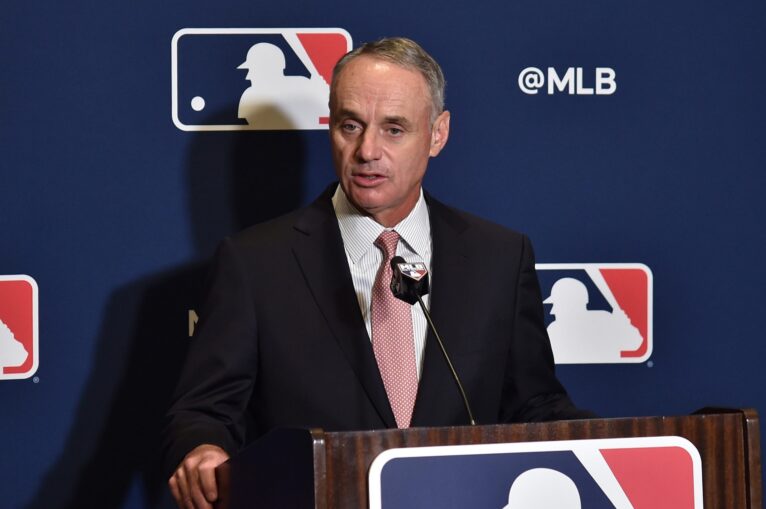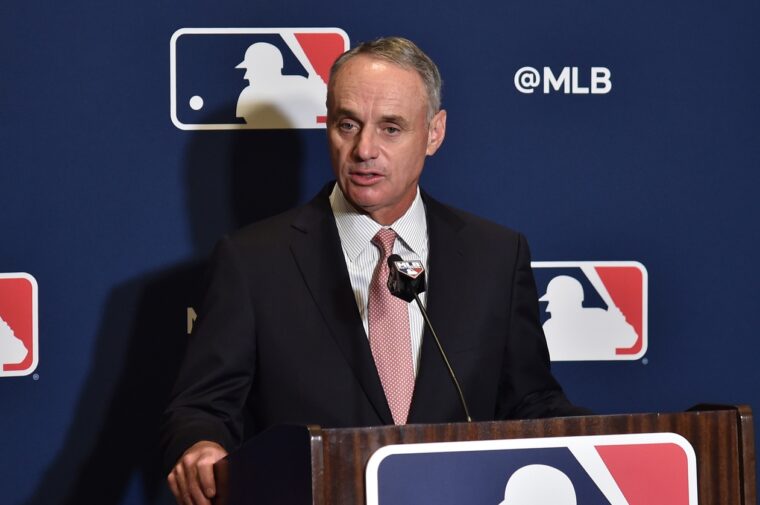
Major League Baseball is likely to expand in the near future, once the stadium situations in Tampa Bay and Oakland are sorted out and decisions are made on whether or not those franchises will relocate. The expectation is that two teams will be added, bringing the number to 32. Will MLB couple this expansion with a radical realignment of divisions? In an article in The Athletic, Jim Bowden thinks that would be a good idea.
Let’s get right to Bowden’s point of view. He proposes two conferences, each with four divisions. The eastern conference would look like this:
East Division
Boston Red Sox
New York Mets
New York Yankees
Philadelphia Phillies
North Division
Cincinnati Reds
Cleveland Guardians
Detroit Tigers
Toronto Blue Jays
Mid-Atlantic Division
Baltimore Orioles
Charlotte expansion team
Pittsburgh Pirates
Washington Nationals
Southeast Division
Atlanta Braves
Miami Marlins
Nashville expansion team
Tampa Bay Rays
The western conference would be structured in this manner:
Midwest Division
Chicago Cubs
Chicago White Sox
Milwaukee Brewers
Minnesota Twins
Southwest Division
Houston Astros
Kansas City Royals
St. Louis Cardinals
Texas Rangers
Pacific Coast Division
Colorado Rockies
Oakland/Las Vegas A’s
Seattle Mariners
San Francisco Giants
West Division
Arizona Diamondbacks
Los Angeles Angels
Los Angeles Dodgers
San Diego Padres
If baseball were to go in this direction, it would be adopting the NHL/NBA model of alignment based on geography. There are obvious benefits to this, including creating or expanding upon geographic rivalries, minimizing travel, and having more games in a team’s time zone which could increase television viewership.
Bowden makes an interesting point about payroll disparity. Using geographic alignment would place larger-market teams in the same division, which would create more games for teams against other teams who face the same economic realities. Look at the eastern conference, eastern division proposal. The Mets and Yankees would play their largest percentage of games against each other, as well as the Phillies (fourth largest market) and the Red Sox (tenth largest market). In the western conference, west division, the Dodgers and Angels are in the second largest market, and would compete with the Padres (27th largest market) and the Diamondbacks (11th largest).
In the eastern conference mid-Atlantic division, the Orioles (28th), Charlotte expansion team (if there is one-22nd), Pirates (26th), and Nationals (9th) would battle it out. Bowden’s idea is a good one, in that this type of alignment may diffuse some of the constant chatter about fairness in baseball (where there is no salary cap) based on market size. Of course, Mets’ owner Steve Cohen has different ideas about fairness and who may be to blame for how much teams spend on players.
Bowden proposes keeping six teams per conference in the postseason, four division winners and two wildcards. There are some points in his plan that make sense for the game, including more games local to each team’s home city, which would allow fans to travel more easily to see their teams play in rivals’ facilities.
It would be interesting to see if the geographic rivalries lost some luster over time. The subway series seemed to peak after a few years, then decline to a point where the games did not sell out. Now that both the Mets and Yankees are highly competitive, the excitement is back. But how long would there be a stir for a Mets/Red Sox rivalry? Would playing 15-18 games against each other every year take some of the bloom off the rose?
The other question to ask is if MLB is ready for this type of radical change. It took 50 years for the designated hitter to be used in both leagues. Baseball embraces its tradition more than any other sport. Yes, there have been some significant changes, with interleague play probably as the biggest. But entirely doing away with the American and National leagues? Maybe not, unless, of course, there is a significant financial upside. The numbers will be crunched, if they have not been already.
Thanks for trying, Jim Bowden. I see your point. I’ll cast my vote against this type of realignment. Pitch clocks, larger bases, and restrictions on shifts? I can get on board. Maybe it’s a bit of traditionalism coming out, but this one just isn’t resonating.
















